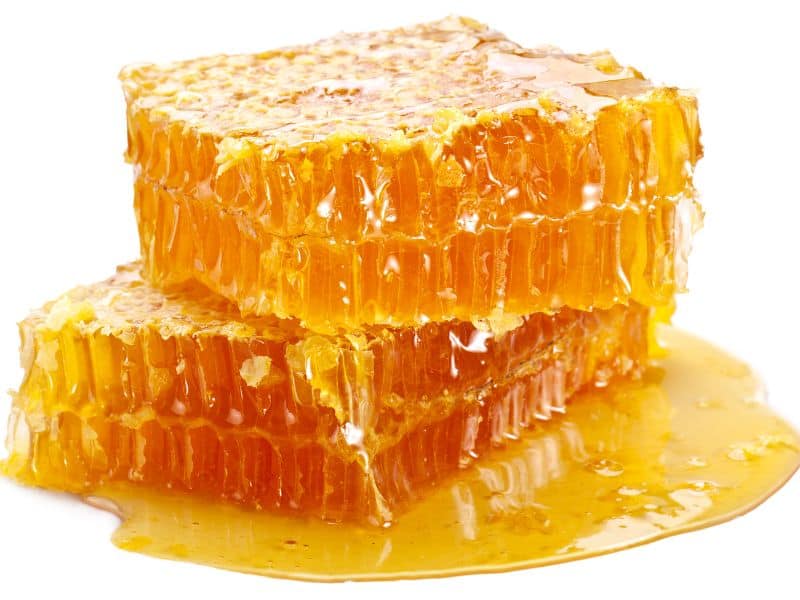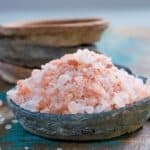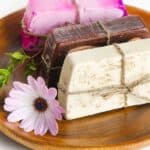Honey has been cherished for its numerous benefits and uses for centuries. In addition to its culinary applications, honey has long been a beloved ingredient in personal care products, including soap. Have you ever wondered why honey is such a popular addition to soaps, and how it can elevate your cleansing experience?
Honey is added to soap for its humectant properties, antioxidant content, antimicrobial action, and soothing effects. It enhances soap’s moisturizing, cleansing, and healing abilities, making it a valuable addition for a nourishing and luxurious skincare experience.
Humectants are substances that attract and retain moisture, and honey is a natural humectant. When added to soap, it helps draw in hydration and keeps skin nourished and soft. It also helps to prevent the loss of water from the surface of the skin, allowing your natural protective lipid barrier to remain intact. Let’s look at some of the benefits of honey in soap.
Benefits of Adding Honey to Soap
Humectant properties
One of the primary reasons to incorporate honey into soap-making lies in its humectant properties.
Honey has a natural ability to attract and retain moisture, which can help to hydrate and nourish the skin.
This makes honey-infused soap an excellent option for individuals with dry or sensitive skin, as it provides a gentle and moisturizing cleanse.
Antioxidant content
Honey is packed with antioxidants, which are essential in maintaining skin health and combating environmental stressors.
These antioxidants work to neutralize free radicals, protect the skin from damage, and promote a more youthful and radiant appearance.
By using honey in soap formulations, you can harness the power of these antioxidants to create a skin-loving product.
Antimicrobial action
Another noteworthy benefit of honey in soap is its antimicrobial properties. Honey has been shown to be effective in inhibiting the growth of various bacteria and fungi, making it a valuable addition to cleansing products.
The inclusion of honey in soap can help to maintain a clean and healthy environment for the skin, while also providing a gentle and natural alternative to harsher chemical cleansers.
Soothing and healing effects
Honey has long been celebrated for its soothing and healing capabilities. It has been used to treat a variety of skin conditions, from burns and wounds to eczema and psoriasis, thanks to its anti-inflammatory and regenerative properties.
Adding honey to soap can provide these restorative benefits to the skin, helping to alleviate irritation, redness, and inflammation.
Choosing The Right Honey for Soap-Making
Raw vs. Processed Honey
When selecting honey for use in soap-making, it’s important to consider the differences between raw and processed honey. Raw honey has not been subjected to high heat or filtration, which helps to preserve its beneficial properties.
Processed honey, on the other hand, may have undergone treatment that can diminish some of its natural qualities. To ensure the highest level of benefits in your soap, opt for raw honey when possible.
Exploring Honey Varieties
There are numerous varieties of honey, each with its own unique flavor profile and properties. Manuka honey, for example, is highly regarded for its antibacterial properties, while Buckwheat honey boasts a high antioxidant content.
Experimenting with different types of honey can result in intriguing and diverse soap creations, allowing you to cater to specific skincare needs and preferences.
The Science of Honey in Soap-Making
Saponification Process
The saponification process is the chemical reaction that occurs when fats or oils are combined with an alkali, such as lye, to create soap.
Honey plays a unique role in this process, as its sugars can influence the soap’s final properties, including its texture, color, and lather.
Honey’s Influence on Soap Properties
When honey is added to the soap-making process, it can accelerate saponification, leading to a smoother and creamier final product.
Furthermore, the natural sugars in honey can enhance the lathering capabilities of the soap, providing a luxurious and indulgent cleansing experience. By understanding the science behind honey’s role in soap-making, you can harness its properties to create truly exceptional soaps.
Techniques to Incorporate Honey Into Soap
Cold Process Method
The cold process method is a popular choice for adding honey to soap. In this technique, honey is usually mixed into the cooled lye solution before combining it with the oils.
This helps to ensure even distribution of honey throughout the soap and prevents overheating during the saponification process.
Hot Process Method
In the hot process method, honey is incorporated after the cook phase. This approach allows for better control over the final color and texture of the soap, as adding honey at a lower temperature can help minimize discoloration and ensure a more consistent outcome.
Melt and Pour Technique
The melt and pour technique involves melting a pre-made soap base and adding desired ingredients, such as honey. This method is beginner-friendly and requires less specialized equipment compared to the cold and hot process methods.
It also allows for greater flexibility in experimenting with colors, scents, and additives.
Crafting Unique Honey-Infused Soaps
Experimenting With Color and Texture
Honey imparts a warm, golden hue to soap that can be accentuated or muted depending on the desired aesthetic.
You can experiment with natural colorants and additives to achieve a range of shades and textures, creating visually appealing honey-infused soaps.
Scent Pairing Ideas
Honey’s natural aroma pairs well with a wide range of scents. Consider combining honey with essential oils such as lavender, cinnamon, or citrus to create a unique and enticing fragrance for your soap.
Experimenting with scent pairings can result in a diverse array of honey-infused soaps that cater to different preferences.
Design Inspirations
Get creative with soap molds and design elements to showcase the beauty of honey-infused soap.
Honeycomb patterns, bee motifs, and nature-inspired shapes are popular choices for creating visually stunning soaps that highlight the presence of honey.
Expanding Your Soap-Making Repertoire
Incorporating Other Natural Additives
In addition to honey, there are many other natural additives that can enhance your soap-making creations.
Consider incorporating ingredients such as oatmeal, herbs, or even coffee grounds to create soaps with unique textures and benefits.
Combining Honey With Other Skin-Loving Ingredients
Honey can be paired with other nourishing ingredients to create soaps tailored to specific skin needs.
For example, combining honey with aloe vera can create a soothing soap for sensitive skin, while mixing honey with activated charcoal may yield a deep-cleansing bar suitable for oily or acne-prone skin.
Exploring Advanced Soap-Making Techniques
As you become more experienced in soap-making, you may wish to explore advanced techniques that can elevate your honey-infused soaps to new heights.
Techniques such as swirls, layers, or embeds can add visual interest and complexity to your soap creations, allowing you to showcase your skills and creativity.
Addressing Common Challenges
Preventing Overheating
One of the challenges in using honey for soap-making is the potential for overheating during the saponification process. The sugars in honey can cause the soap mixture to heat up more than usual.
To prevent this, closely monitor the temperature and use an ice bath or a cooler environment, if needed, to keep the temperature in check.
Minimizing Honey Discoloration
Honey can sometimes darken when exposed to high heat, which may affect the final color of your soap. To minimize discoloration, you can opt for the cold process method or add honey at a lower temperature during the hot process method.
Additionally, using a lighter-colored honey variety can also help to reduce color changes in your soap.
Fixing Soap Consistency Issues
If your honey-infused soap turns out too soft or crumbly, you may need to adjust your recipe or technique.
Ensuring that you use proper measurements, the right balance of oils, and allowing sufficient curing time can make all the difference in achieving the desired consistency for your soap.
Ethical and Eco-friendly Considerations
Supporting Sustainable Beekeeping
When sourcing honey for soap-making, it’s crucial to choose suppliers that prioritize sustainable and ethical beekeeping practices. This helps to support the health of bee populations and the environment.
Look for certifications or labels that indicate responsible sourcing, and consider supporting local beekeepers who employ sustainable practices.
Cruelty-free and Vegan Alternatives
If you prefer cruelty-free or vegan options, there are plant-based alternatives to honey that can still provide similar benefits in soap-making.
Agave nectar and maple syrup are two popular substitutes that can be used in place of honey.
By opting for these alternatives, you can create eco-friendly and cruelty-free soaps that align with your values while still delivering a luxurious and nourishing experience.
Frequently Asked Questions
Honey pairs well with essential oils such as lavender, cinnamon, and citrus, creating unique and enticing fragrances.
While you can use various types of honey, raw honey is preferred as it retains more of its beneficial properties compared to processed honey.
Honeycomb patterns, bee motifs, and nature-inspired shapes are popular choices for creating visually stunning honey-infused soaps.
Look for certifications or labels that indicate responsible sourcing, and consider supporting local beekeepers who employ sustainable practices.
Yes, honey can be combined with ingredients such as oatmeal, herbs, or coffee grounds to create unique textures and benefits in your soap.
Conclusion
In conclusion, the addition of honey to soap opens up a world of possibilities for creating nourishing, luxurious, and visually stunning products. By understanding the benefits of honey and mastering various soap-making techniques, you can craft unique honey-infused soaps that cater to a range of skincare needs and preferences.
Furthermore, ethical and eco-friendly considerations such as supporting sustainable beekeeping and choosing cruelty-free alternatives can make your soap-making journey even more rewarding. So, whether you’re a seasoned soap-maker or a curious newcomer, embrace the enchanting world of honey-infused soaps and let your creativity soar.






